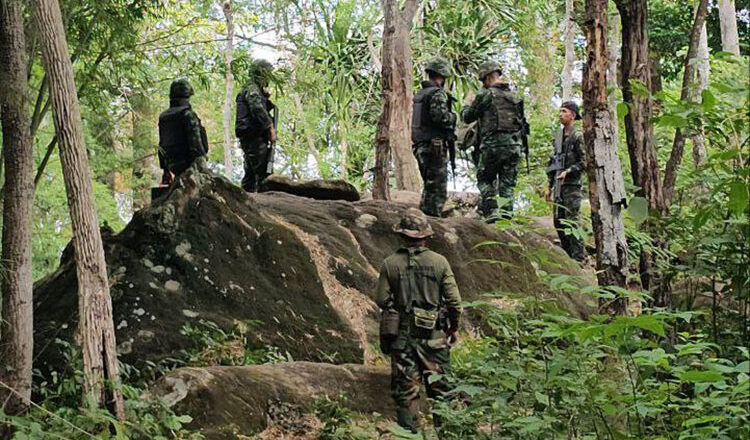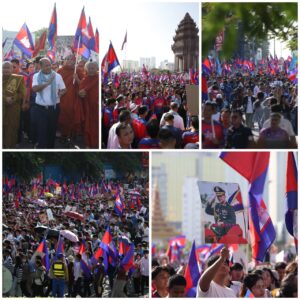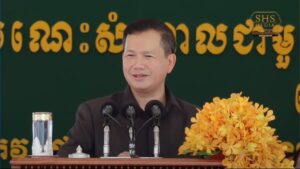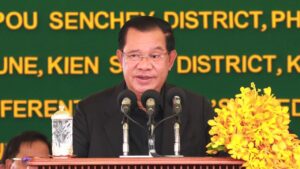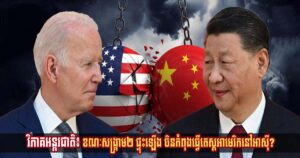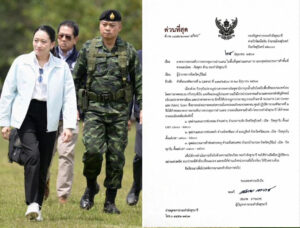Opinion: Assault at Ta Moan Thom an attack on Cambodian sovereignty and regional stability
Cambodia’s border row with Thailand exemplifies the complex legacy of colonial treaties. Roth Santepheap
Khmer Times | On July 14, an alarming tragedy happened at the revered Ta Moan Thom Temple on the Cambodia-Thailand border. A Cambodian soldier, legally assigned to the temple, was physically attacked by a Thai soldier and a Thai citizen. This act of aggression is not only offensive; it is a direct violation of Cambodia’s sovereignty, dignity, and geographical integrity.
This was not simply a border conflict. The crime was a symbolic affront to the Cambodian nation and populace, executed at one of our most esteemed cultural heritage locations.
Assault on international law and historical truth
Ta Moan Thom Temple represents the ancient Khmer civilisation and is tightly connected with Cambodia’s cultural and historical identity. Its location has been a significant issue in the ongoing border dispute between Cambodia and Thailand. The 1907 Franco-Siamese Convention granted the land of Ta Moan Thom to Cambodia, and subsequent internationally recognised maps have continuously verified Cambodia’s authority over the area. The temple is formally registered with Cambodia’s Ministry of Culture and Fine Arts, thereby strengthening the country’s legal and historical claim.
Breach of international norms and Cambodia’s commitment to peaceful solutions
The recent entry by Thai military soldiers and citizens into Cambodian territory at Ta Moan Thom, resulting in violence against a Cambodian soldier, represents a significant violation of international law and accepted standards of government behaviour. Such activities undermine the ideals of the rules-based international order and strain the bilateral relations between two sovereign Association of Southeast Asian Nations (ASEAN) members.
Cambodia has adopted an approachable strategy, emphasising diplomatic avenues and peaceful resolution of disputes. This position is consistent with ASEAN’s core principles of non-intervention, mutual respect, and peaceful resolution of conflicts. In spite of ongoing provocations and armed conflict, Cambodia has exhibited caution and a resolute dedication to addressing border disputes through negotiation and international legal frameworks. The government recently made choice to file an official complaint with the International Court of Justice (ICJ), highlighting its commitment to maintaining international law and safeguarding its territorial integrity, despite rising nationalistic pressure and retaliatory measures from Thailand.
Thailand’s double standard and threat to ASEAN unity
Thailand’s self-portrayal as a democratic, peace-oriented country stands in stark contrast to its actions at Ta Moan Thom, where the involvement of Thai soldiers and civilians in violent incidents has highlighted shortcomings in military discipline and a disregard for ASEAN’s foundational values. These actions not only strain bilateral relations with Cambodia but also raise serious concerns about Thailand’s commitment to peaceful dispute resolution and non-interference, principles that are essential for ASEAN cooperation.
The efficacy of ASEAN relies on mutual respect and a unified commitment to peace. The violation of a member state’s independence by another threatens not only direct relations but also the overall trust and cohesion of the region. Cambodia’s unwavering commitment to these principles, especially in the face of provocation, highlights the significance of responsible leadership.
Failure to take immediate action to address these violations poses a risk of increasing tensions, leading to heated public sentiment and endangering decades of advancement in Cambodia-Thailand bonds. To maintain ASEAN unity and regional stability, Thailand must exhibit authentic accountability and a regenerated dedication to peaceful collaboration.
Broader implications
The ongoing border conflict between Cambodia and Thailand exemplifies the complex legacy of colonial treaties, notably the 1907 Franco-Siamese Convention, which established much of the contemporary boundary yet left several sections inadequately marked. The absence of clearly defined, mutually recognised borders, coupled with various interpretations of historical maps, has consistently raised tensions between the two countries. The situation developed for the worse in May, resulting in a fatal confrontation that led to the loss of a Cambodian soldier. Subsequently, both countries undertook retaliatory measures, including the closure of border crossings, trade sanctions, and the enhancement of military preparedness, resulting in a major decline of relations to their lowest level in almost a decade. In reaction to these persistent problems, Cambodia has endeavoured to settle the conflict through international legal avenues, formally soliciting the intervention of the ICJ. This action highlights Cambodia’s inclination towards rule-based dispute resolution and international arbitration. Conversely, Thailand has upheld its stance that these disputes ought to be resolved bilaterally and has demonstrated hesitance to acknowledge the ICJ’s authority regarding the issue. The difference in methodology underscores larger enquiries into the efficacy of international law compared to direct negotiation in addressing enduring border disputes. The regional disagreement presents a considerable threat to the fundamental values of the ASEAN. The ASEAN Charter underscores the importance of sovereignty, territorial integrity, and the resolution of issues via communication and consultation. As members of ASEAN, Cambodia and Thailand are required to adhere to these principles and avoid actions that may destabilise the region. The persistent difficulties jeopardise not just bilateral relations but also threaten to erode regional trust and the shared dedication to peace that sustains ASEAN’s unity and stability.
The situation at Ta Moan Thom Temple is emblematic of broader challenges facing Southeast Asia: reconciling historical grievances with modern international law, and balancing nationalism with regional cooperation. Cambodia’s patience and diplomatic engagement should not be mistaken for weakness. To restore trust and uphold ASEAN’s credibility, Thailand must acknowledge its transgressions, ensure accountability for violations, and recommit to peaceful, lawful dispute resolution. Only through mutual respect and adherence to international norms can both nations safeguard their shared heritage and contribute to lasting regional stability.
A call for national unity and historical awareness
The recent events at Ta Moan Thom Temple are more than just a border dispute; they represent a crucial moment for Cambodia’s national identity and collective memory. This incident highlights the urgent need for national unity and a deeper understanding of our history, especially among the younger generation. By fostering historical awareness such as knowledge of the 1907 Franco-Siamese Convention and appreciation for cultural heritage; Cambodians can better safeguard sovereignty, support diplomatic efforts, and build resilience in times of crisis.
Empowering youth through education, community engagement, and digital literacy are essential to combat misinformation and promote informed citizenship. Ultimately, Cambodia’s strength lies in the unity and wisdom of its people, who must work together to defend the nation’s interests and uphold its peaceful path for future generations.
Conclusion: Peaceful but not passive
We call on Thailand to show true leadership by acknowledging its mistake, upholding ethical standards, and recommitting to peaceful coexistence. Cambodia, for its part, will stand firm grounded in law, supported by history, and united in national dignity.
Let this serve as a reminder: We are peaceful, but we are not passive. And when pushed, we will stand with truth, unity, and unshakable pride.
The author is a Phnom Penh-based geopolitical analyst. The opinions expressed here are the author’s own.

